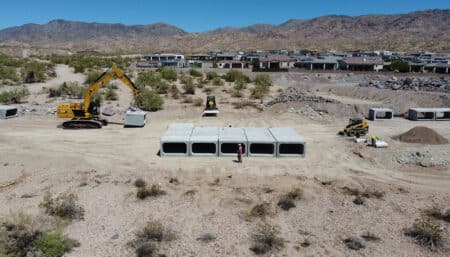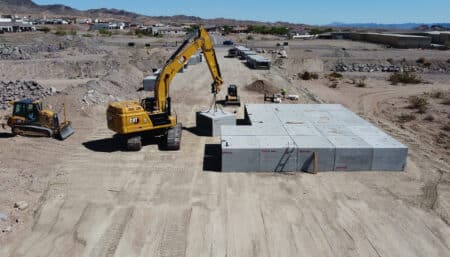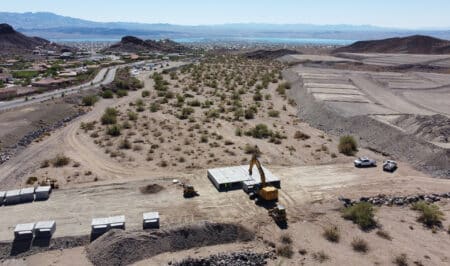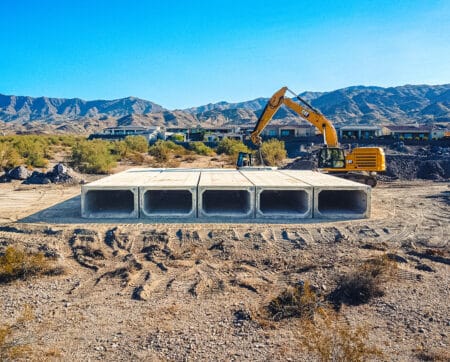Trinity 8’x4′ Box Culvert
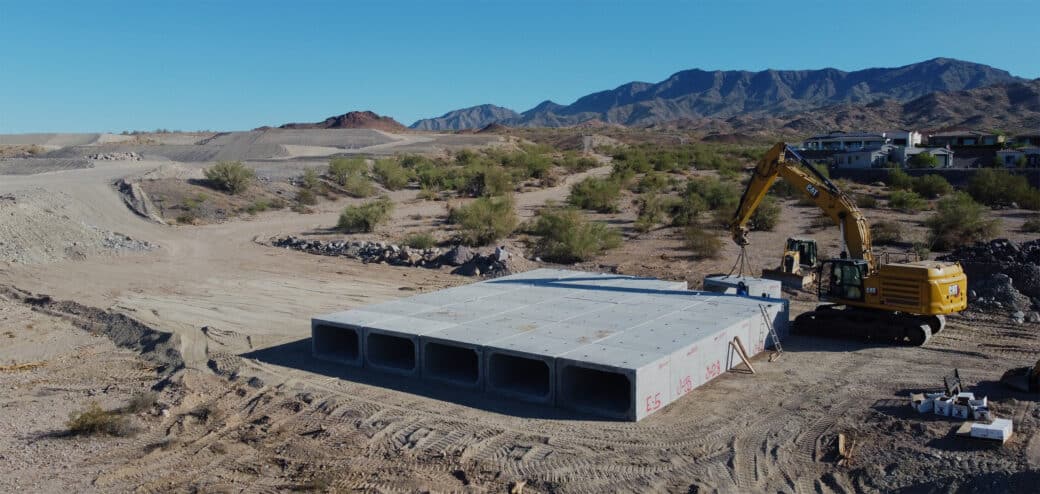
Specifications
Engineer
Contractor
Owner
Trinity is a new private residential community being built near the shores of Lake Havasu City, Arizona. The multi-phase construction project expands the Havasu Foothills Estates development with additional housing, roadways, and essential infrastructure. To support this project, Geneva Pipe and Precast is supplying 360 LF of 8’x4’ reinforced concrete box culvert (RCB), which will provide the base for an access road to the final phase of development. Constructed in five individual barrels, the culvert will also accommodate for proper stormwater drainage underneath the road. Using precast RCB allows the contractor to focus their efforts on other critical path items and avoid delays associated with casting such a large structure in place.
Geneva Pipe manufactured a total of 45 pieces of RCB for this project, a significant quantity that could pose challenges in fabrication and storage. We worked closely with long-time partner G-Oxley Construction to synchronize manufacturing and delivery with their installation schedule. This careful coordination minimized the impact on our storage capacity while ensuring the contractor had the product on-site at the exact time needed. With the jobsite being over 500 miles from our plant, a successful logistics plan was key to our team ensuring all loads were delivered on time and under budget.
During installation, a challenge arose while using a large excavator to place the box culvert sections. Typically, a crane is used, which allows for another piece of equipment to be in the trench pushing the sections together while the crane holds the weight of the section. Without a crane, we had to get creative. Our team worked with the contractor while on-site to implement a system where the excavator would place the section as close as possible, then, using a small dozer and timber to protect the concrete, push the sections together. This solution proved successful, making for a quick and efficient installation process.


